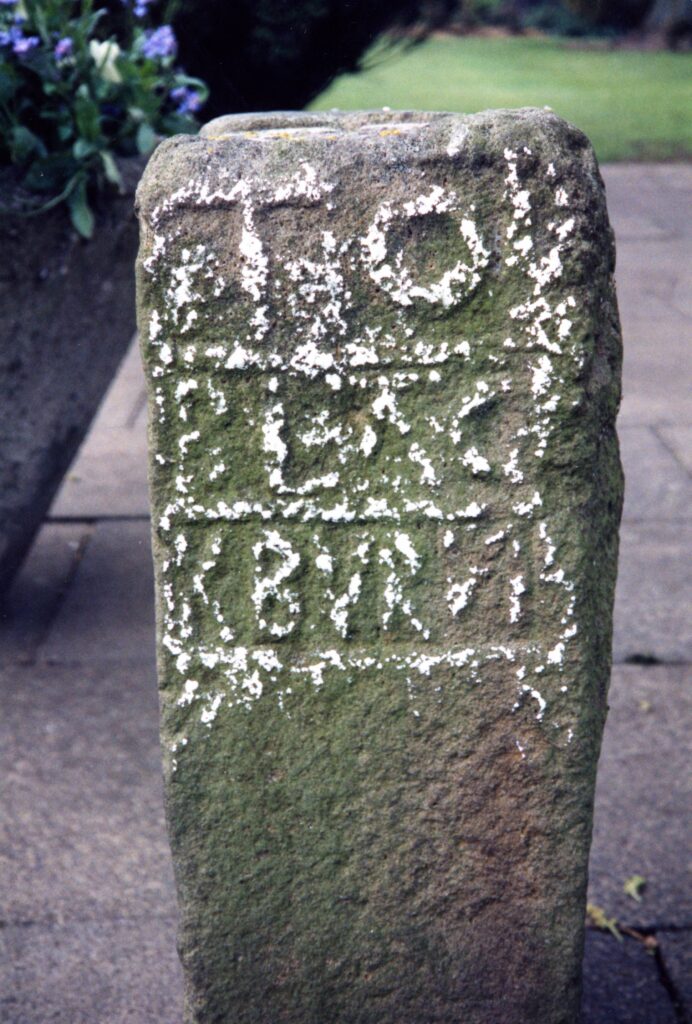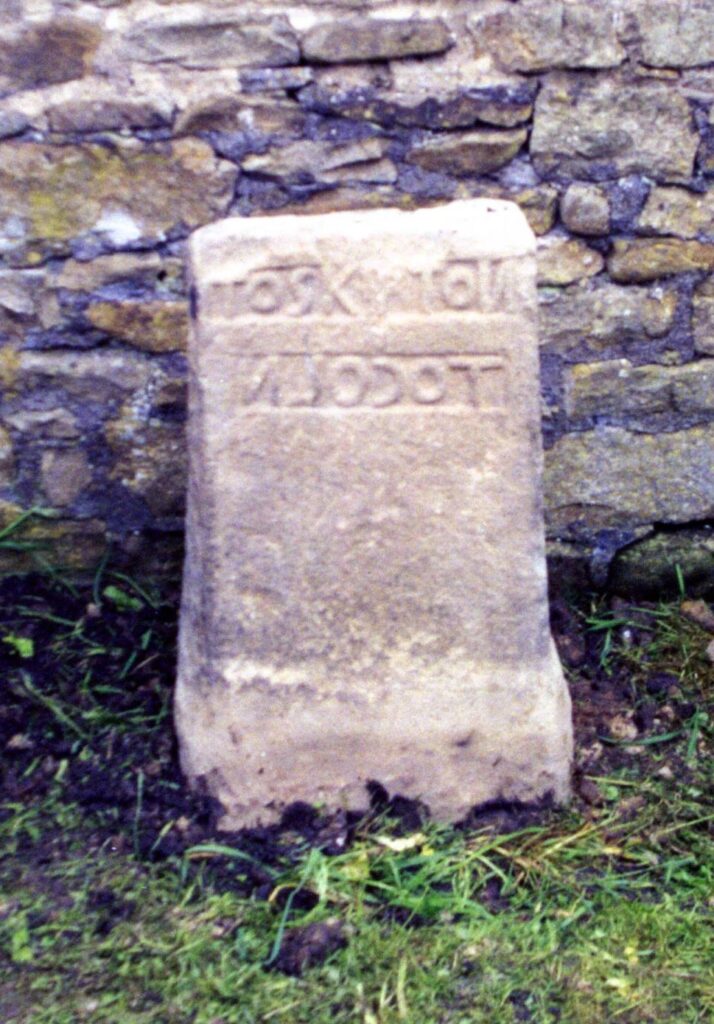Earby, a small town in the north-west of the old West Riding, boasts an interesting and rare old guide-stoop. It was probably put up early in the 18th century following instructions from the County Justices to set up stoops at cross-highways pointing to the nearest market towns – in this case Skipton, Colne and Blackburn. It does not give distances, as these were not required until 1737.
It is unlike most such guide-stoops in that it is carved in relief, rather than incised in the usual fashion. It was suggested that a sign over the door of the White Lion Inn of 1681 was stylistically virtually identical, and could be by the same stonemason.
Its most unusual feature, however, is its use of mirror-writing. It reads on one side simply “TO SKIPTON”, and underneath, back to front, “TO COLN”. Thus Skipton is to the right, and Colne to the left. On another side it directs, on three lines, “TO / BLAC / KBURN”. The Ns in Skipton and Blackburn are back-to-front.
In 1938 the Craven Herald reported that it was one of only two of this type in the north of England, the other being at Boroughbridge. But if this is refers to one at Kirby Hill, just north of Boroughbridge, anything that may have been carved on it is now illegible. There is, however, one in Derbyshire, at Goatscliff, south of Grindleford. This, according to Howard Smith’s definitive book on The Guide Stoops of Derbyshire (Horizon Press, 2009), is the only one with this feature in the county.
The original location of the stoop has been much discussed. Current thinking is that it was on Long Lane, south of Earby, then a main route between Skipton and Colne, at a point where another track led west to Sough Bridge and Salterforth, and thence on an uncertain route to Blackburn. The article referenced below discusses this in more detail.
After its removal from wherever it had originally been the stoop has had a chequered history: from the garden of the Clerk to the Earby Urban District Council sometime in the 1920s to 1936; then to the council’s yard until after the war, and from there to the War Memorial in Sough Park. Finally, in 1997, having been deemed in the way on Remembrance Days, it was removed for safety to the Mining Museum on School Lane.
The museum, sadly, had to close in 2015, and the exhibits were taken over by the Dales Countryside Museum in Hawes, run by the National Park. The stoop, however, remains and can still be seen outside the lovely Old Grammar School building. This was built in 1600 following a bequest by local man Robert Windle who died in 1591, and is still owned by Robert Windle’s Foundation, an educational charity.
Sources: websites of Robert Windle’s Foundation and the Earby & District Local History Society, in particular https://www.robertwindlefoundation.org/single-post/2017/09/15/the-earby-guide-stoop and an article by Trevor Tattersall in the Local History Society’s newsletter, Summer 2015, available from link at http://www.earbyhistory.co.uk/earby-chronicles/4559852678. The photographs are reproduced with the kind permission of the Earby & District Local History Society.
RWH / August 2021

